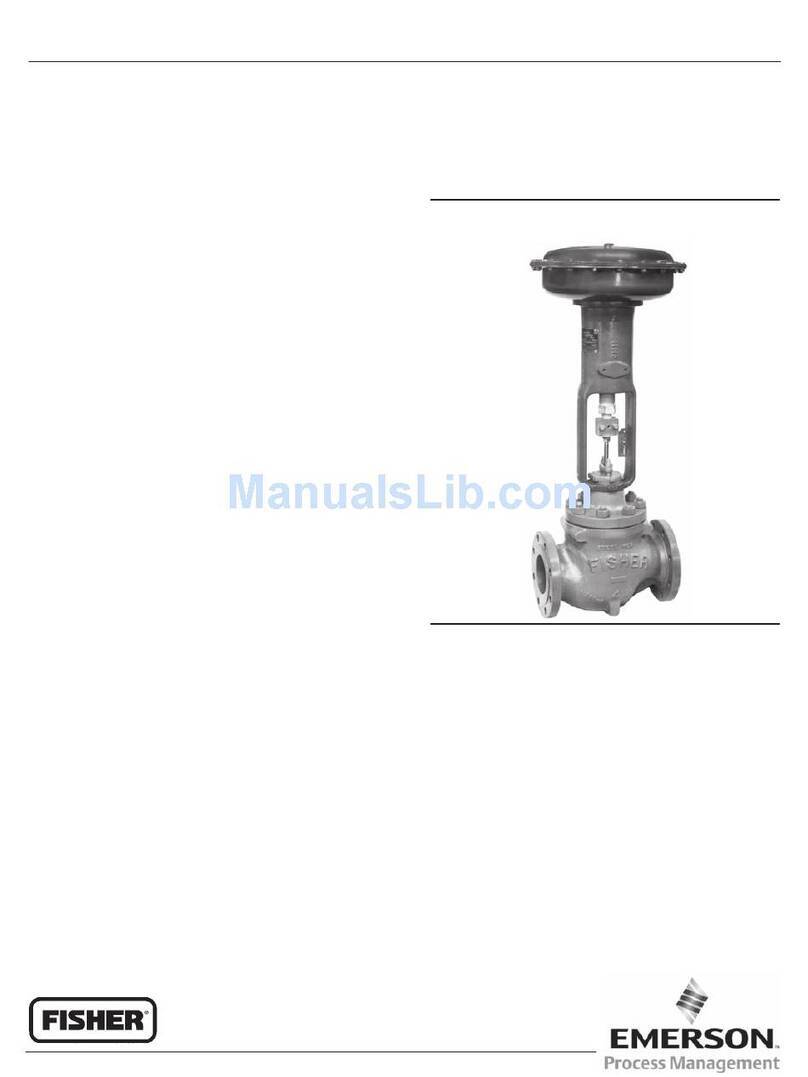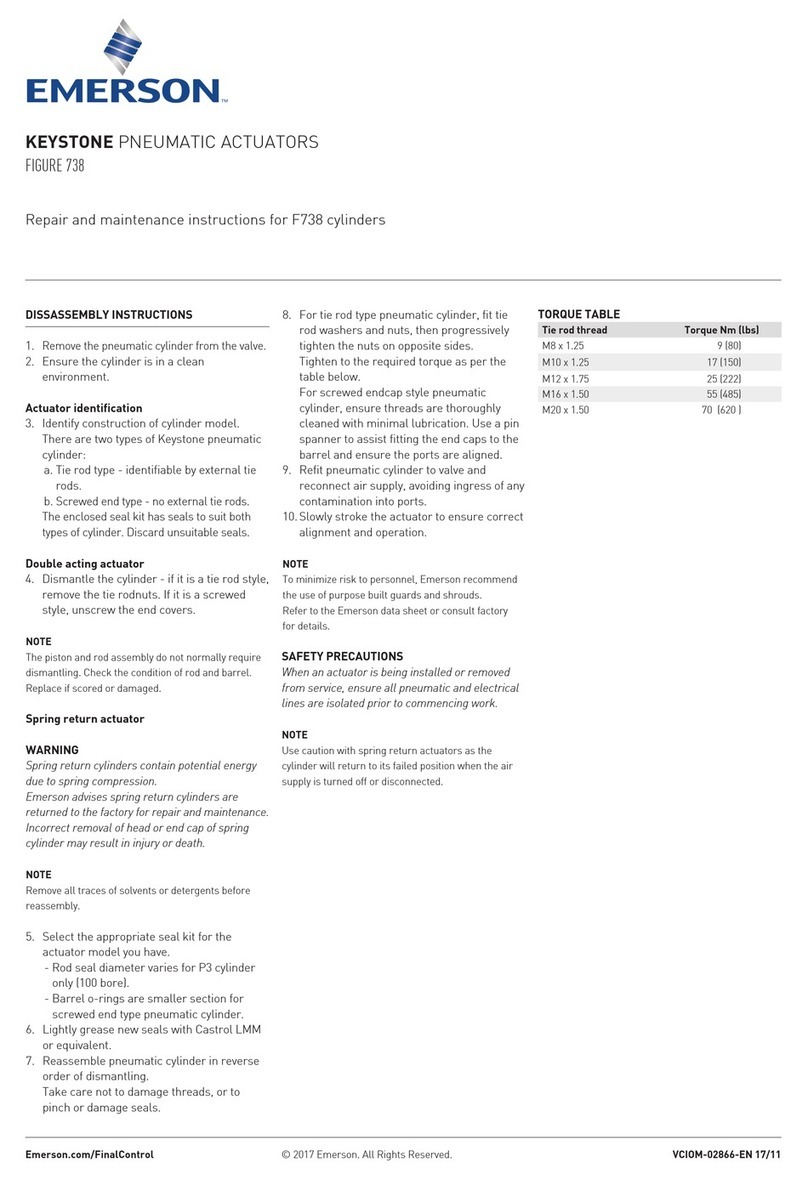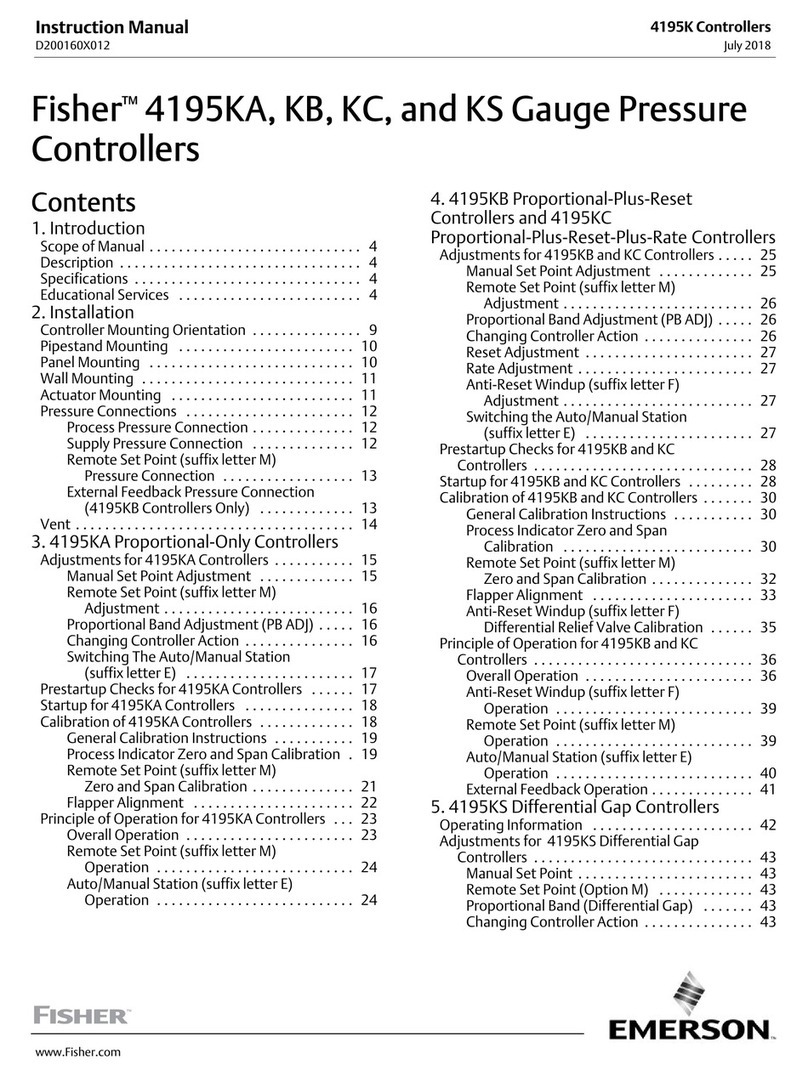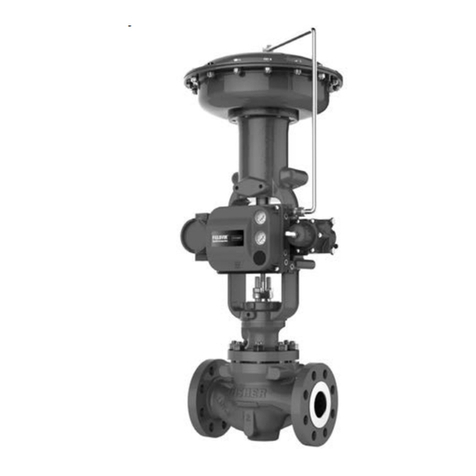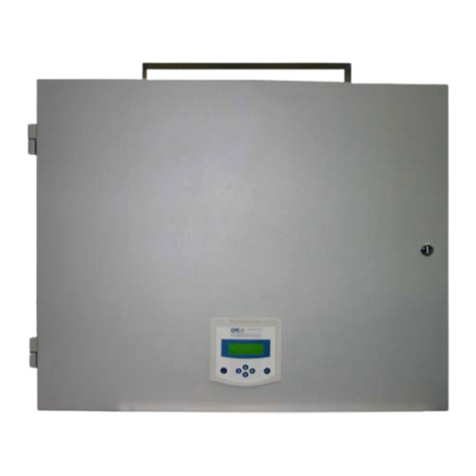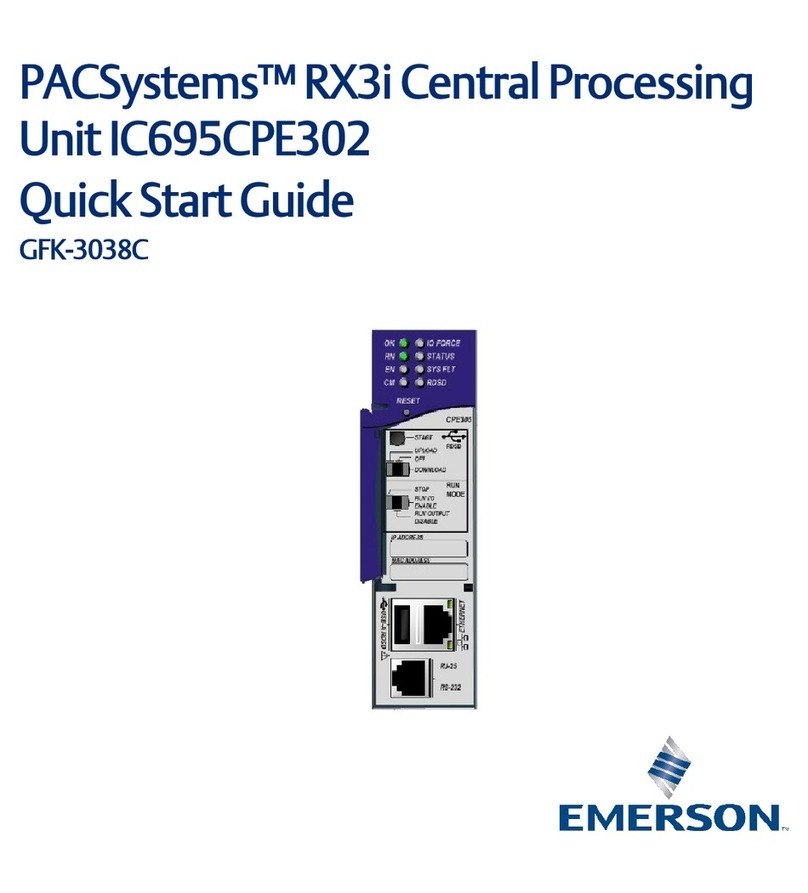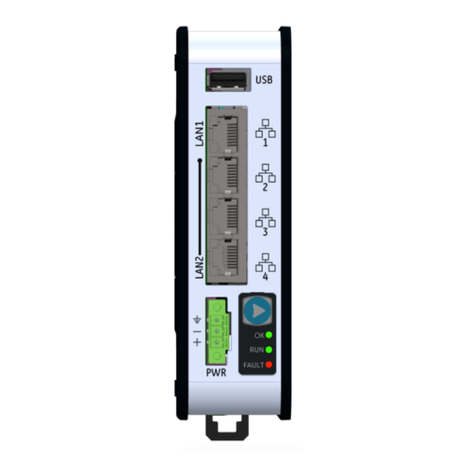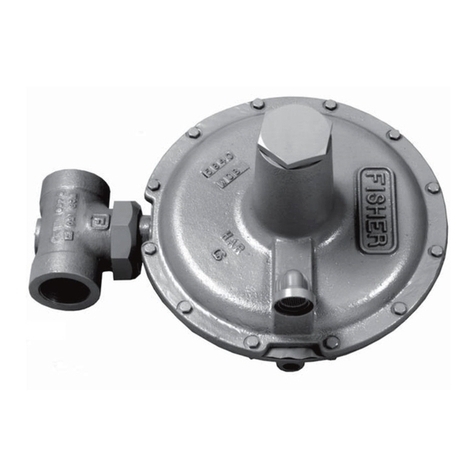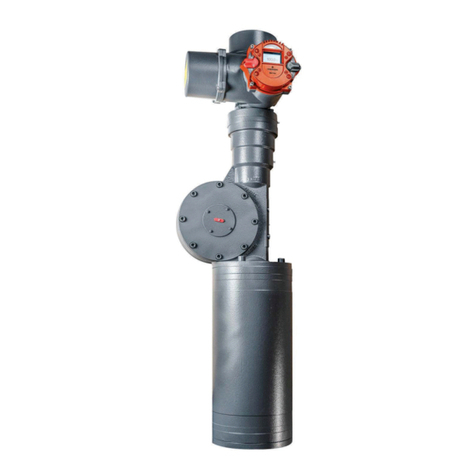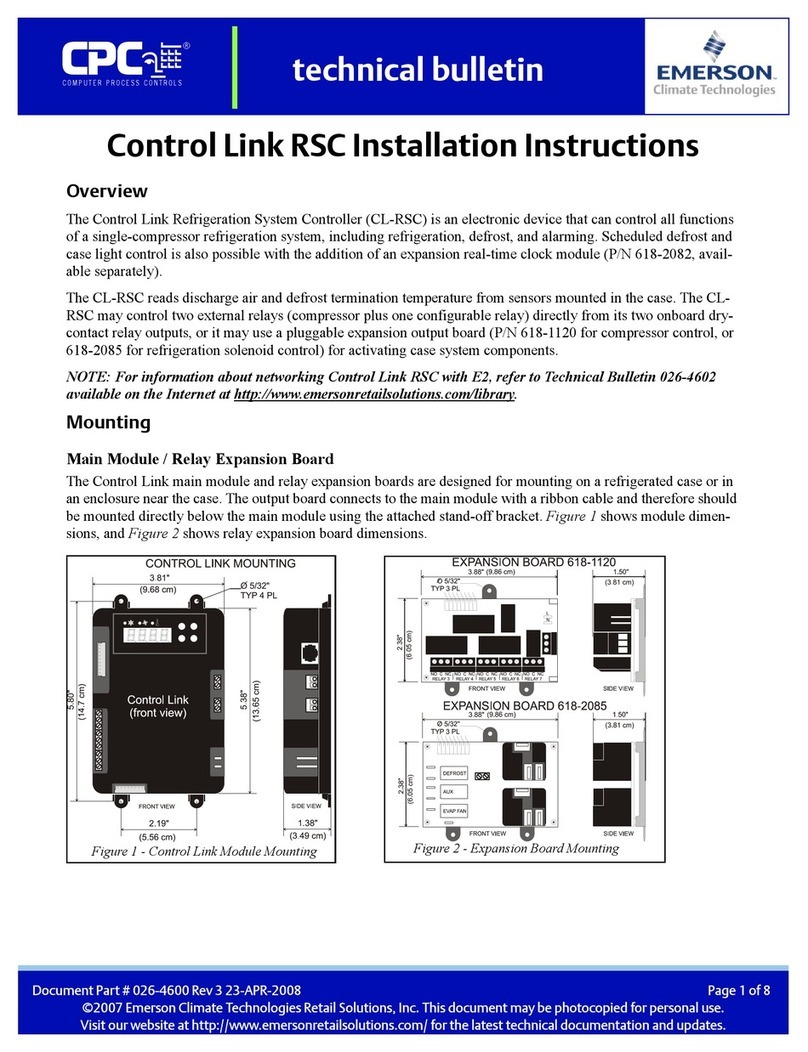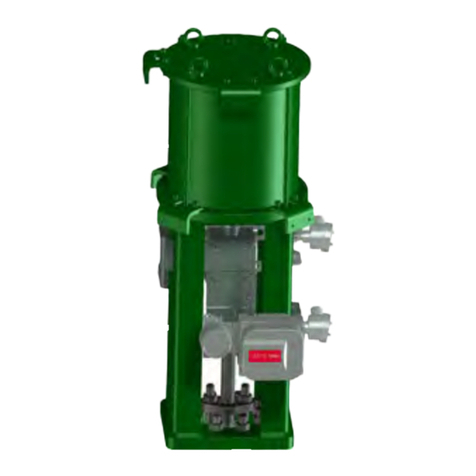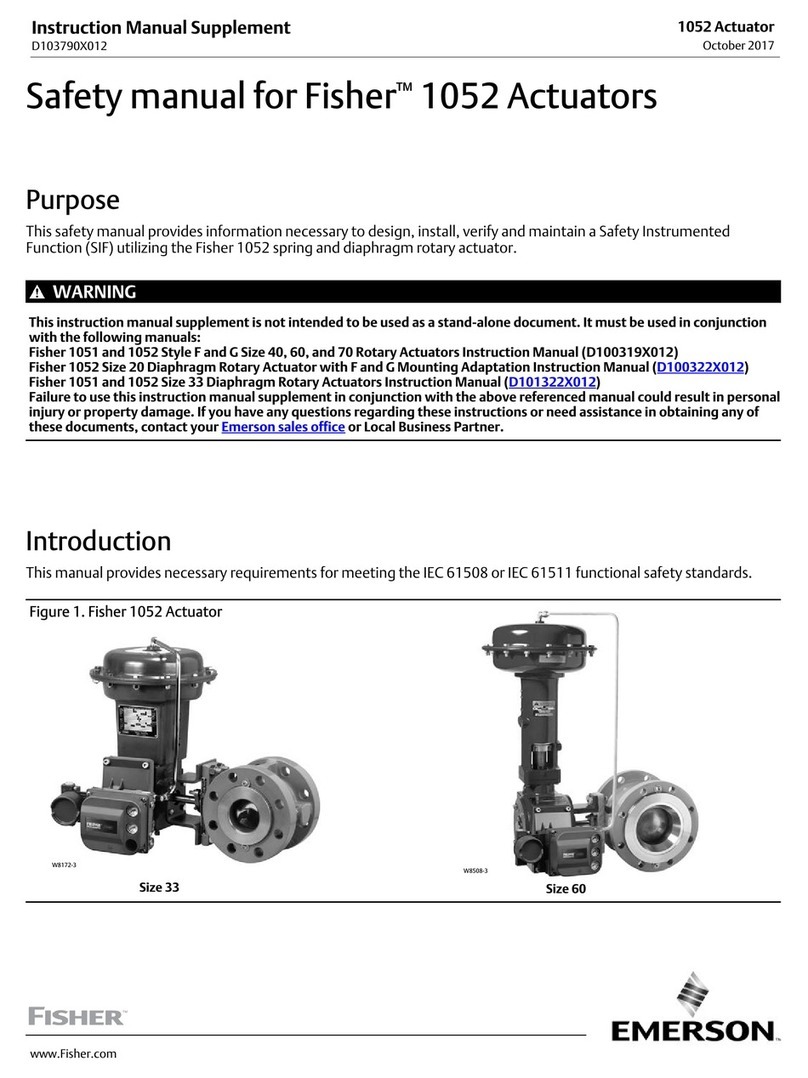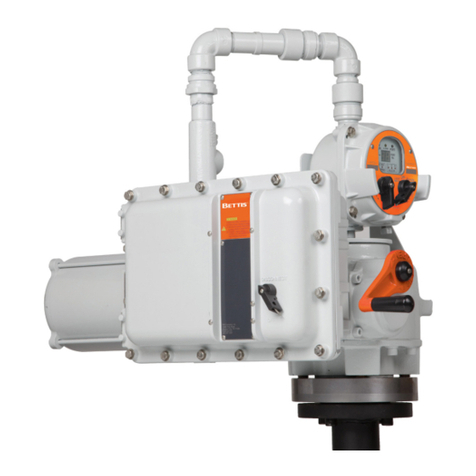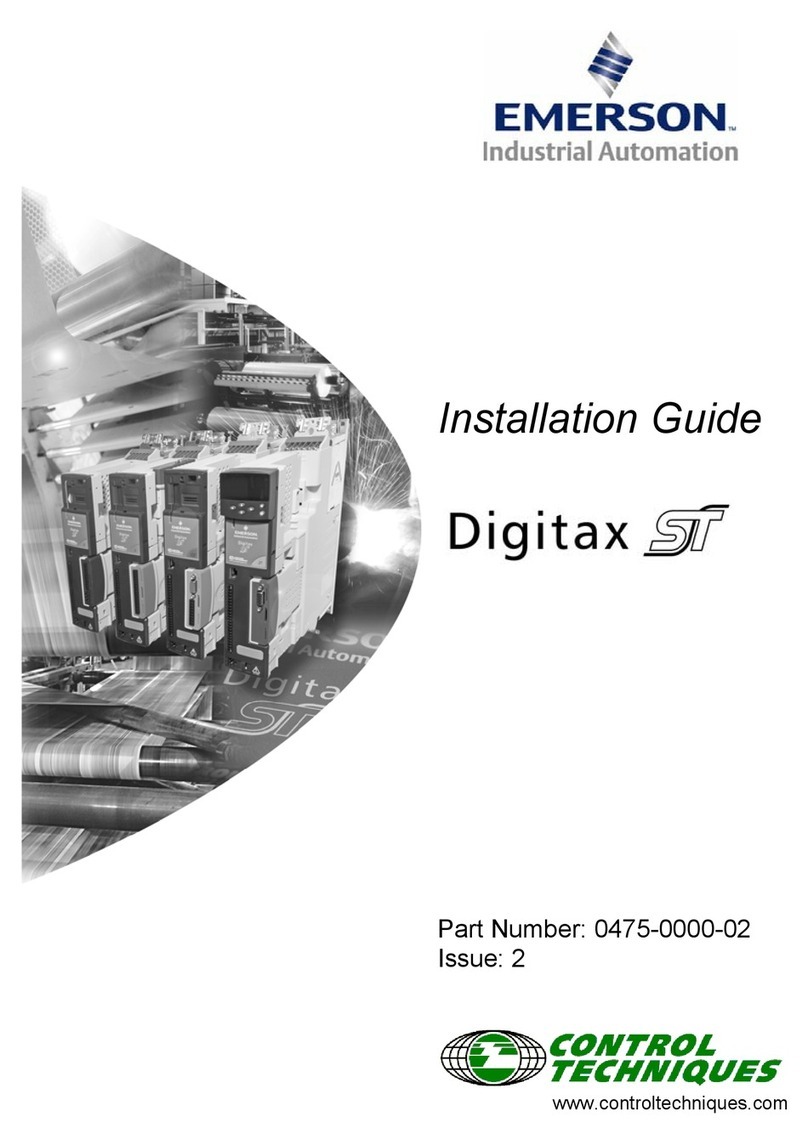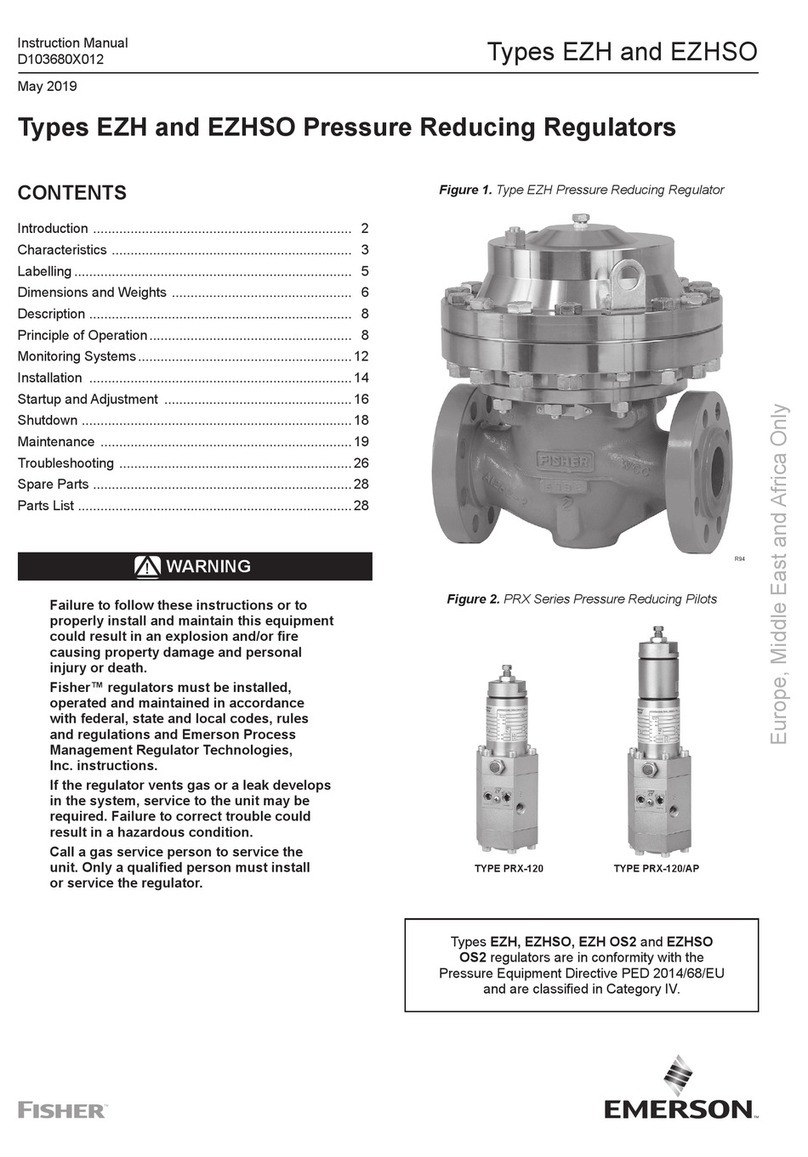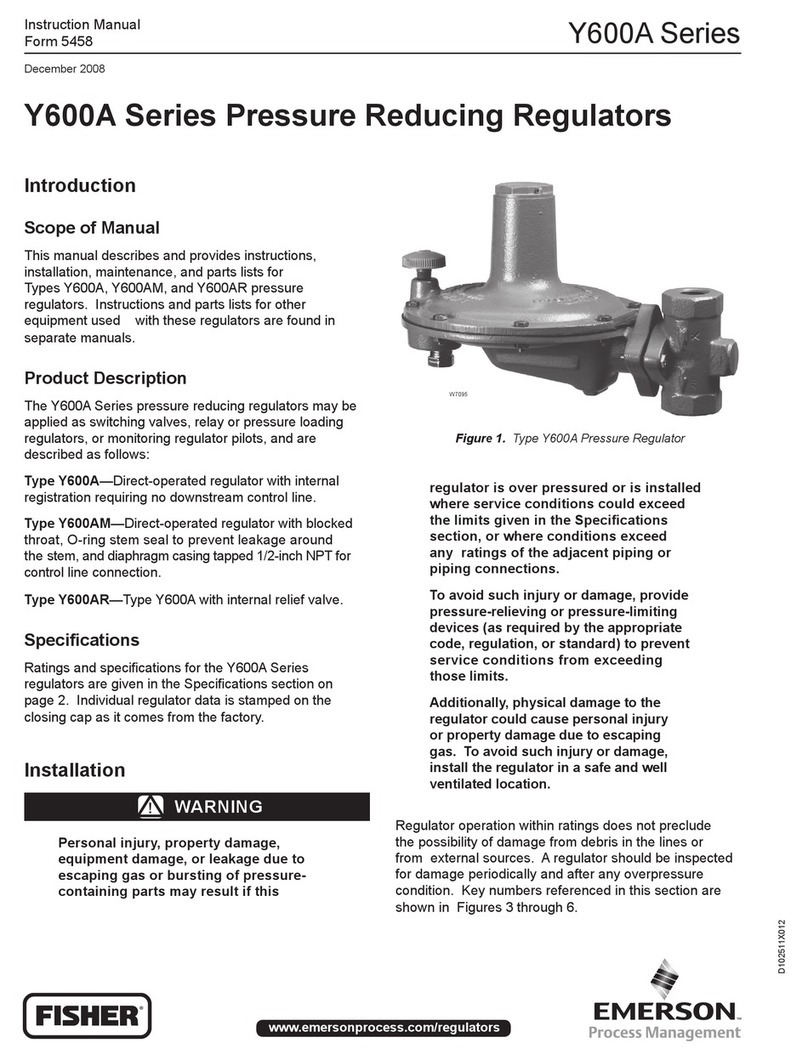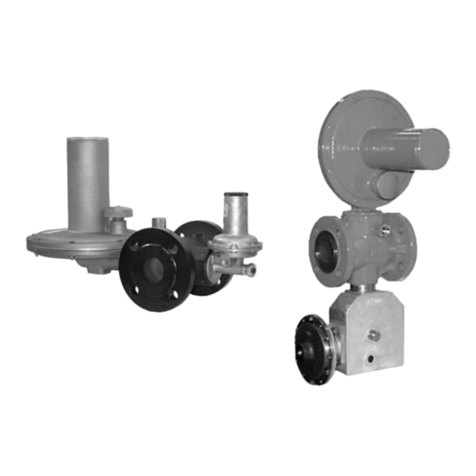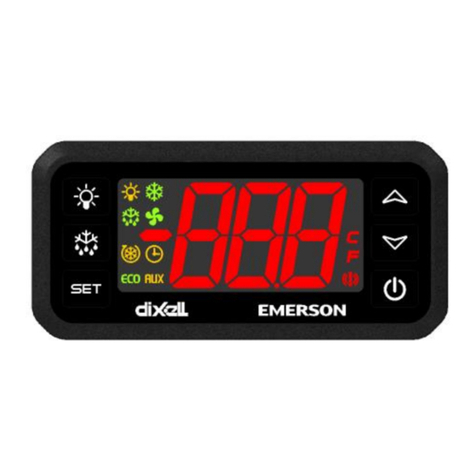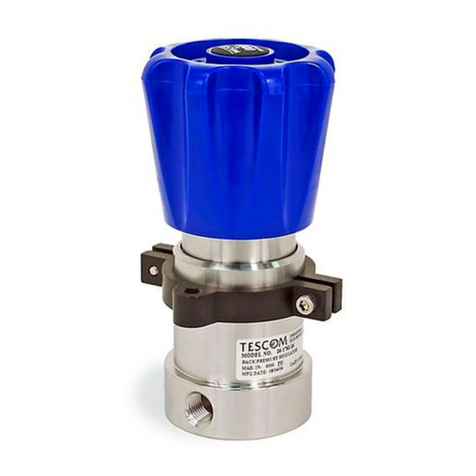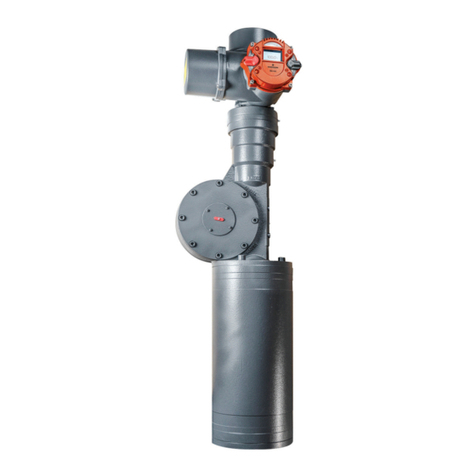
Installation
!
WARNING
Only qualied personnel should install
or service a regulator. Regulators should
be installed, operated and maintained
in accordance with international and
applicable codes and regulations and
Emerson instructions.
If the regulator vents uid or a leak develops
in the system, it indicates that service
is required. Failure to take the regulator
out of service immediately may create a
hazardous condition.
Personal injury, equipment damage, or
leakage due to escaping uid or bursting of
pressure containing parts may result if this
regulator is overpressured or is installed
where service conditions could exceed the
limits given in the Specications section, or
where conditions exceed any ratings of the
adjacent piping or piping connections.
To avoid such injury or damage, provide
pressure-relieving or pressure-limiting
devices (as required by the appropriate code,
regulation, or standard) to prevent service
conditions from exceeding limits.
Additionally, physical damage to the
regulator could result in personal injury and
property damage due to escaping uid. To
avoid such injury and damage, install the
regulator in a safe location.
Clean out all pipelines before installation of the regulator and
check to be sure the regulator has not been damaged or has
collected foreign material during shipping. For NPT bodies,
apply pipe compound to the external pipe threads. For flanged
bodies, use suitable line gaskets and approved piping and
bolting practices. Install the regulator in any position desired,
unless otherwise specified, but be sure flow through the body
is in the direction indicated by the arrow on the body.
Note
It is important that the regulator be installed
so that the vent hole in the spring case
is unobstructed at all times. For outdoor
installations, the regulator should be located
away from vehicular trafc and positioned
so that water, ice and other foreign materials
cannot enter the spring case through the
vent. Avoid placing the regulator beneath
eaves or downspouts and be sure it is above
the probable snow level.
Downstream Control Line Installation
!
WARNING
Failure to install a downstream control line
could result in a hazardous condition. Install
downstream control line(s) to the slam-shut
device when construction uses external
pressure registration. The regulator and
slam-shut device will not control pressure
or shutoff if a downstream control line is not
installed on those constructions where external
pressure registration is required.
CSB600 Series regulators with an “ET” or “EN” in the type
number use external pressure registration. To communicate
the downstream pressure to the regulator, connect a
downstream control line tubing to the 3/4 NPT control line
tapping in the lower diaphragm casing and connect the other
end of the tubing downstream of the regulator outlet with a
minimum distance of 6 times the outlet pipe diameter.
For all types with external control lines, use tubing with an
inner diameter of 16 mm / 0.63 in. or larger.
Downstream Control Line Installation with
Slam-Shut Device
Refer to Figure 1. When installing the Types CSB604ET,
CSB604EN, CSB604FET, CSB604FEN CSB624ET,
CSB624EN, CSB624FEN, CSB654ET and CSB654EN
regulators, connect downstream control line tubing to the
lower casing of the regulator and run the tubing downstream
of the regulator outlet with a minimum distance of 6 times
the outlet pipe diameter. Connect a second, separate
downstream control line tubing to the lower casing of
the slam shut and run the tubing downstream of the
regulator outlet a minimum distance of 6 times the outlet
pipe diameter.
For all types with external control lines, use tubing with an
inner diameter of 16 mm / 0.63 in. or larger for the primary
regulator and 6.4 mm / 0.25 in. or larger for the slam shut.
Installation with External Overpressure Protection
If the regulator is used in conjunction with a Type 289H
relief valve, it should be installed as shown in Figure 3.
The outside end of the vent line should be protected
with a rainproof assembly. The Type 289H is typically
set 25 mbar / 10 in. w.c. higher than the outlet pressure
setting of the regulator, up to 75 mbar / 30 in. w.c. outlet
pressure. For pressure greater than this, set the Type 289H
0.05 bar / 0.75 psi higher than the outlet pressure setting
of the regulator. Refer to the 289 Series Instruction Manual
(D100280X012) for complete information.
CSB600 Series
6
